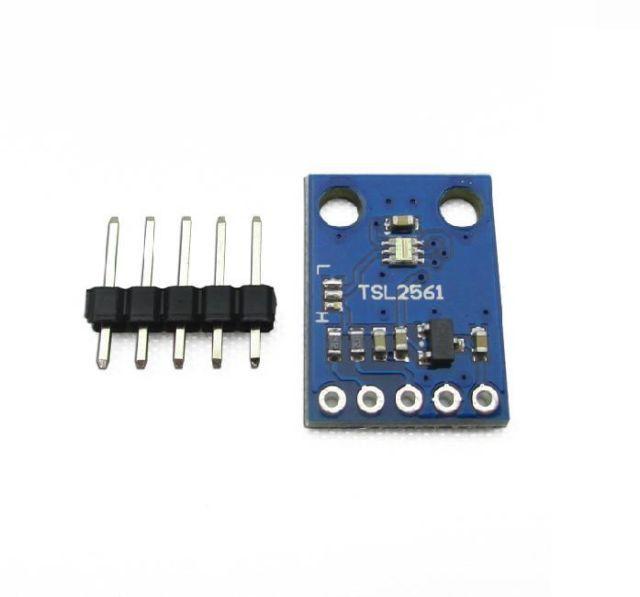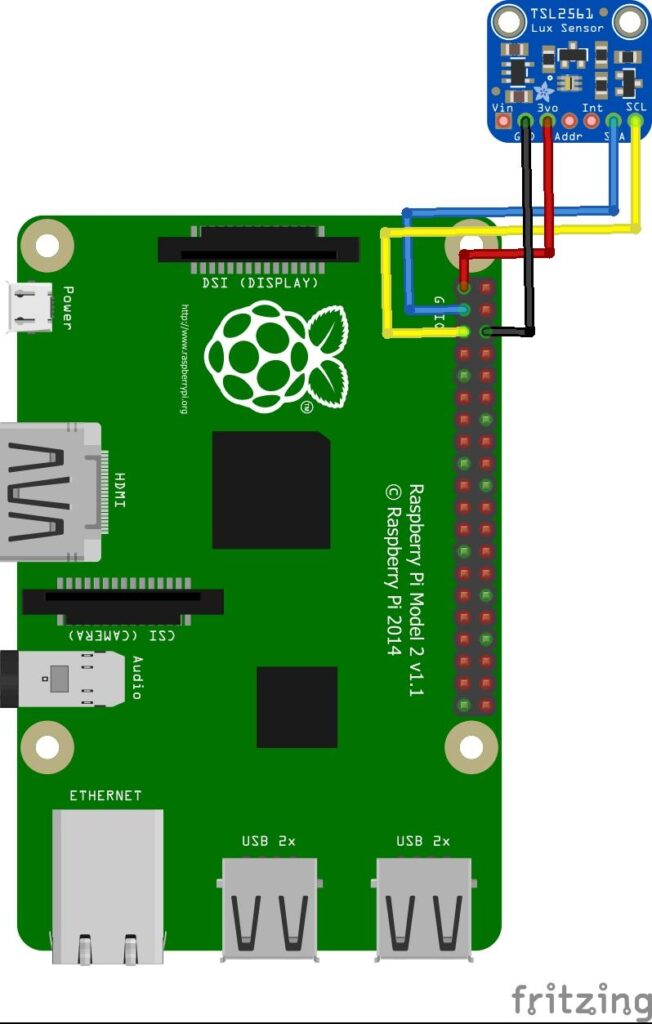This TSL2561 is an I2C light-to-digital converter TSL2561 that transforms light intensity to a digital signal. The TSL2561 features a selectable light spectrum range due to its dual light sensitive diodes: infrared and full spectrum. You can switch among three detection modes to take your readings. They are infrared mode, full spectrum and human visible mode.
When running under the human visible mode, this sensor will give you readings just close to your eye feelings.
Features
Selectable detection modes
High resolution 16-Bit digital output at 400 kHz I2C Fast-Mode
Wide dynamic range: 0.1 – 40,000 LUX
Wide operating temperature range: -40°C to 85°C
Programmable interrupt function with User-Defined Upper and lower threshold settings
Here is a typical module that makes it easier to work with the sensor

Parts List
Layout and Connection
| Device Pin | PI |
|---|---|
| GND | GND |
| Vcc / 3.3 | 3.3v |
| SCL | D1 |
| SDA | D2 |
| ADDR | N/C |
| Int | N/C |
Code
[codesyntax lang=”java”]
// Distributed with a free-will license.
// Use it any way you want, profit or free, provided it fits in the licenses of its associated works.
// TSL2561
// This code is designed to work with the TSL2561_I2CS I2C Mini Module available from ControlEverything.com.
// https://www.controleverything.com/content/Light?sku=TSL2561_I2CS#tabs-0-product_tabset-2
import com.pi4j.io.i2c.I2CBus;
import com.pi4j.io.i2c.I2CDevice;
import com.pi4j.io.i2c.I2CFactory;
import java.io.IOException;
import java.text.DecimalFormat;
import java.text.NumberFormat;
public class TSL2561
{
public static void main(String args[]) throws Exception
{
// Create I2C bus
I2CBus Bus = I2CFactory.getInstance(I2CBus.BUS_1);
// Get I2C device, TSL2561 I2C address is 0x39(57)
I2CDevice device = Bus.getDevice(0x39);
// Select control register
// Power ON mode
device.write(0x00 | 0x80, (byte)0x03);
// Select timing register
// Nominal integration time = 402ms
device.write(0x01 | 0x80, (byte)0x02);
Thread.sleep(500);
// Read 4 bytes of data
// ch0 lsb, ch0 msb, ch1 lsb, ch1 msb
byte[] data=new byte[4];
device.read(0x0C | 0x80, data, 0, 4);
// Convert the data
double ch0 = ((data[1] & 0xFF)* 256 + (data[0] & 0xFF));
double ch1 = ((data[3] & 0xFF)* 256 + (data[2] & 0xFF));
// Output data to screen
System.out.printf("Full Spectrum(IR + Visible) : %.2f lux %n", ch0);
System.out.printf("Infrared Value : %.2f lux %n", ch1);
System.out.printf("Visible Value : %.2f lux %n", (ch0 - ch1));
}
}
[/codesyntax]
Testing
run this as sudo pi4j TSL2561.java
Links
Luminosity Sensor Breakout GY-2561 TSL2561 Light Module


